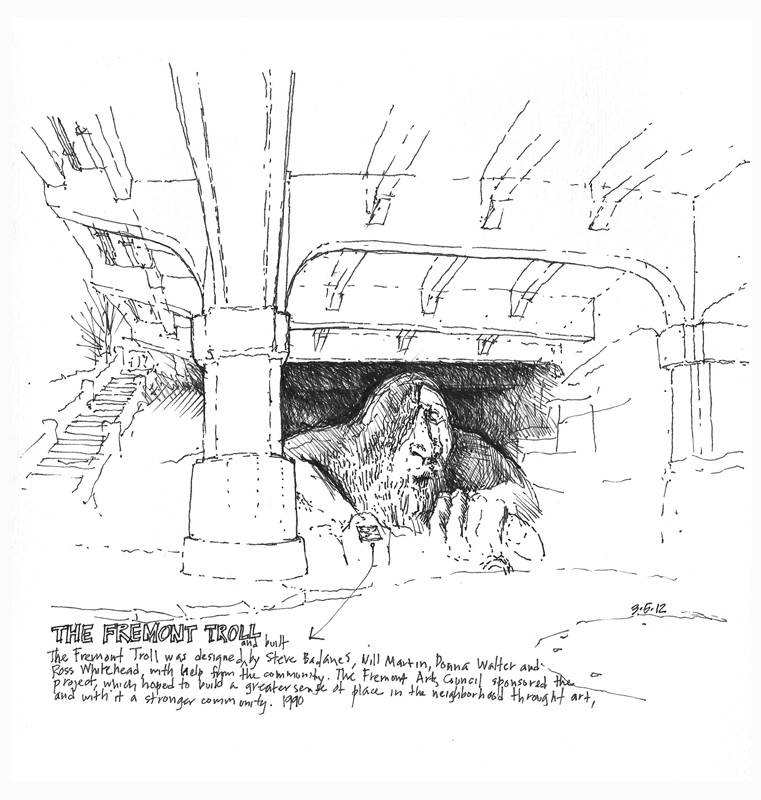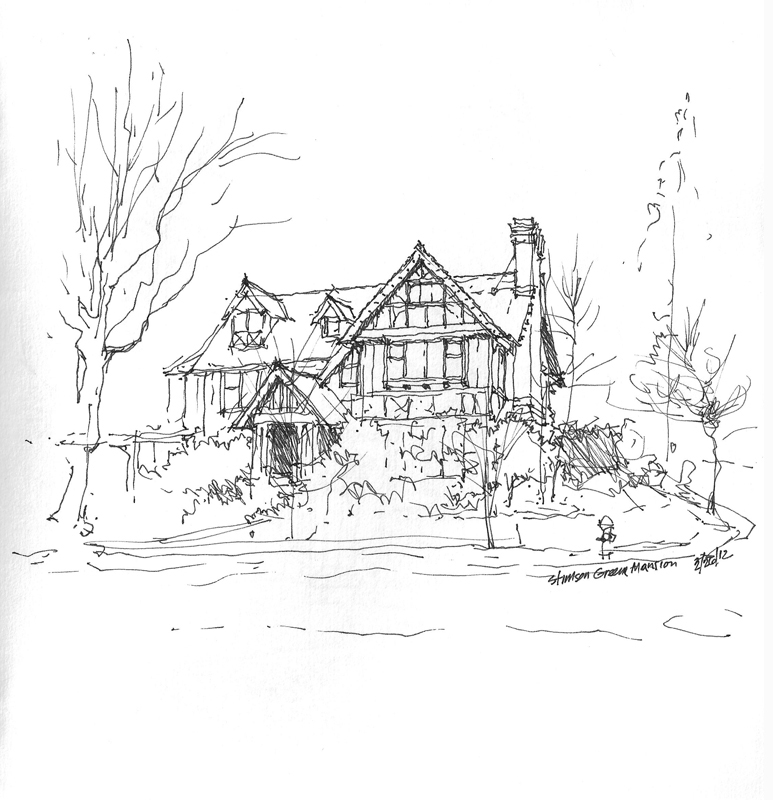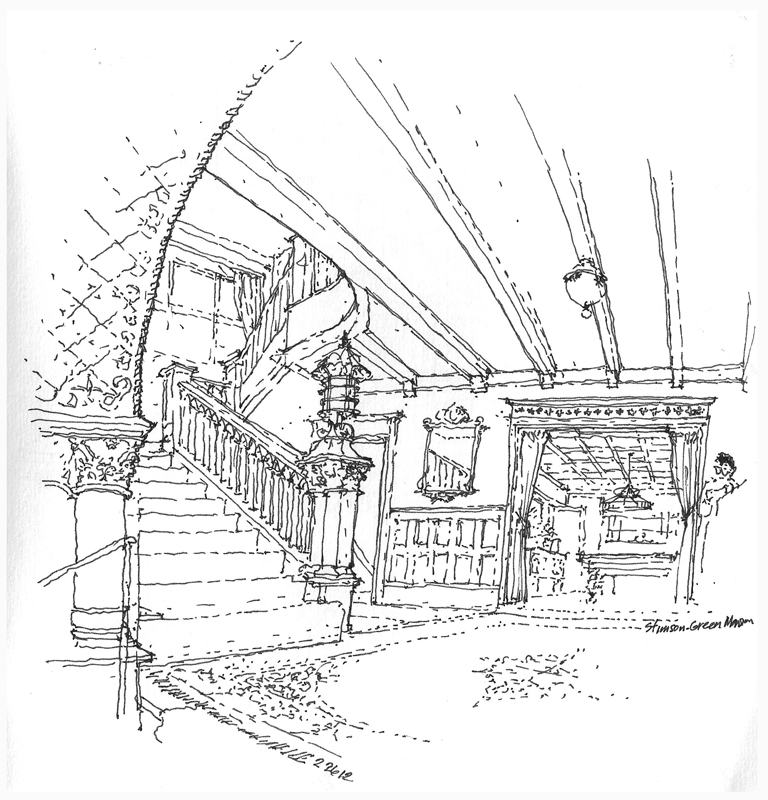Patrick Manley recently asked me about this spherical perspective I had drawn of Athens, Ohio, which he remembered having seen in a friend’s apartment. His friend turned out to be Steve Swisher, a former student of mine.
The story behind the drawing begins with the decision to phase out the architecture program at Ohio University. I had always admired the spherical perspectives in Ed Bacon’s book, The Design of Cities, and wanted to do a similar view of Athens to remember the place where I had started my teaching career back in 1972.
In the spring of 1976, I drew a 2-foot diameter circle on illustration board and began laying out the street pattern of the town, using as the center the intersection of East Washington Street and South Court Street, where the county courthouse resides. I used aerial photos for the rooftops, but first I had to literally walk the streets to get the relative heights and massing of the buildings and the portion of their facades that would be visible. Having Google Maps and Google Earth available would have made this drawing so much easier to do! For fun, I placed distances from the center of Athens to various points in the world along the circumferential horizon of the drawing.
Upon completing the drawing, I made a number of prints and mailed them to all of the students from that last semester in the spring of 1976 as a remembrance.
In 2007, Christine Tom of Lamborn’s Studio on State Street contacted me and expressed interest in reprinting copies for sale. I had forgotten that they had sold prints of the original drawing in the late 70’s. Of course, I agreed and so prints of this drawing are still for sale there.




